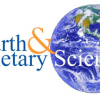Virtual Seminar-Driving Curiosity: Exploring Martian geology and habitability through mineralogy
Join Earth and Planetary Sciences virtually for our Friday seminar featuring the MSA distinguished lecturer
Shaunna M. Morrison
Earth and Planets Laboratory, Carnegie Institution, Washington, DC, USA
Peter Buseck Public Lecture
Driving Curiosity: Exploring Martian geology and habitability through mineralogy
Meeting ID: 875 7599 6613
Passcode: 215159
Talk Abstract
Mars has long been a source of curiosity and intrigue for humankind – we look out to our nearest cousin to better understand our own formation and evolution, the broader characteristics of our solar system and beyond, and whether or not we are alone in the universe. This desire to explore has led to many orbital and landed missions to Mars, with many striking and surprising discoveries made. One such mission is the NASA Mars Science Laboratory (MSL), with the Curiosity rover housing the most advanced and extensive payload of scientific instrumentation ever sent to another planetary object. Since 2012, Curiosity as performed in situ analyses of rocks and soil in Gale crater – providing great insight into Mars’ geologic past, particularly illuminating that there were, indeed, potentially habitable environments with periods of rich water regimes and geologic cycling. Among the instruments informing our understanding of the martian past is the CheMin X-ray diffractometer, which performs X-ray diffraction on drilled rock and scooped sediment samples, providing quantitative mineralogical identification of major and minor phases, mineral phase abundance, unit-cell parameters, chemical composition of major phases, and, when coupled with bulk chemistry data derived from the MSL APXS (Alpha Particle X-ray Spectrometer) instrument, the chemical composition of the abundant amorphous material that we have discovered to be ubiquitous throughout Gale crater. Minerals, along with their chemical compositions, tell us the geologic history of a sample, a deposit, and a planet – they provide detailed insight and context for the complex evolutionary past of Mars.
In this seminar, I will outline the MSL mission, with a brief mention of the newest NASA Mars mission: Mars2020, describe the MSL payload and detail the specifications and functions of CheMin, delve into the crystal chemical methods used to estimate mineral composition from X-ray diffraction data, briefly discuss the abundant amorphous material observed in all Gale crater samples and how we determine its chemical composition, and introduce some advanced analytics and machine learning techniques that are changing the way we use mineralogy to address questions in Earth and planetary science.
More information
Shaunna Morrison’s research website for more information: Research Website and Earth and Planets Laboratory, Carnegie Institution for Science


